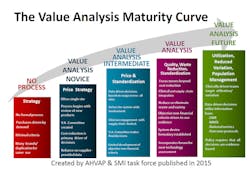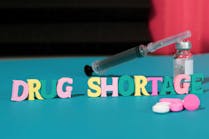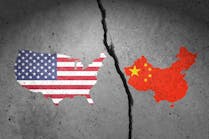Just as the definition and parameters of value vary from person to person, organization to organization, so goes the definition and parameters of value analysis.
Short of universal acceptance and implementation, value analysis seems to slide along a scale of convenience. Some consider value analysis to be a synonym for “product evaluation,” even though the former tends to be more strategic, less tactical and transactional than the latter. Further, value analysis concentrates more on people – patients, staff, etc. – through personal and professional relationships as key to process improvement, whereas product evaluation focuses on technology and device use connected to costs and outcomes.
Unfortunately, delineation between the two can be murky.
But not everyone thinks so. For example, Lumere subscribes to product evaluation as a function of the larger and more encompassing value analysis process.
“Product evaluation is a single component of Value Analysis,” observed Suzanne Smith, RN, Senior Solution Advisor – Value Analysis, Lumere, a GHX company. “There were ‘Product Evaluation’ committees a long time ago that have since evolved into Value Analysis committees, which are much broader and more strategic in scope. Organizations that narrowly define Value Analysis as only product evaluation are typically very nascent in their maturity.”
Smith encourages Value Analysis teams “to create a charter that defines product evaluation as a component – not the sole purpose of the function. This charter must then be broadly socialized within the organization to ensure uptake. If you want something to stick, you must preach it to anyone who will listen!”
Smith contends it’s critical that the Value Analysis charter connects to an organization’s strategic goals – particularly now during the pandemic.
“What many failed to recognize – until COVID-19 brought perspective – is that the Supply Chain department is a strategic partner in helping organizations realize these goals,” she noted. “They have the data and insight to help connect the dots.”
“The profession may have started out by evaluating products, but it’s evolved into informing evidence-based decision making that’s integrated with clinical practice,” Hermes said. “It’s about clearly communicating that Value Analysis goes above and beyond evaluating a product’s cost or efficacy. To do this, you must have a champion that’s willing and able to build a coalition of Value Analysis supporters across departments and service lines. This doesn’t happen by osmosis. You need to change the culture.”
“Value Analysis is the collaborative structure and process to make decisions for products, services, capital and pharma that are used across multiple departments,” she said. “More importantly, it is a decision structure and process that incorporates CQO [Cost, Quality and Outcomes] – not just price. Value Analysis can be used for product evaluation but Value Analysis is much more. Value Analysis evaluates process, services, equipment and their impact on clinical outcomes. It is a structure that is driven by clinicians, facilitated by Supply Chain and led by a CXO.”
Value Analysis represents a transforming methodology to help providers select products and services on the value they bring to the organization and its patients – and not on price, according to Jenny Sydnor, RN, Director, Healthcare Consulting, Advisory Services, Premier Inc.
“Looking beyond product evaluation and selection, today’s value analysis enables enterprise-wide decision making on high-quality supplies, services and equipment by first considering care delivery, safety and outcomes as well as total cost,” she noted. “It strives to balance issues related to quality, patient and staff safety, revenue enhancement and reimbursement optimization across the continuum of care.”
“The confusion or equating of the two terms is certainly understandable, particularly as organizations continue to mature their value analysis processes,” Lohkamp said. “For many organizations, the initial driver for setting up value analysis is to expand on the product evaluation process by coordinating more inputs from more teams and including evaluation of the impacts on how care is delivered. We’re starting to see organizations look to tools like Workday Strategic Sourcing to formalize intake processes to prioritize value analysis projects and keep stakeholders involved. This allows a direct connection to subsequent sourcing and contracting activities needed to execute on committee recommendations and track results.”
Power among people
Sydnor insists that successful value analysis programs require strong relationships and ongoing collaboration among multidisciplinary teams that incorporate the engagement and support of executive leadership as well as collaboration with suppliers.
“Robust and contemporary value analysis programs focus on the intersection of cost, quality, safety, outcomes and patient experience,” she continued. “Alongside these goals, the scope of value analysis moves far beyond that of product evaluation ─ requiring a strong people element and coordinated effort across provider departments, service lines and vendor partners.”
Value analysis is all about relationships across providers, clinicians and supporting departments all aligned with the strategic vision of the organization and its providers, according to Deborah Roy, Principal, Vizient.
“A solid clinically integrated value analysis process empowers providers to work on initiatives that are most important to their patient care,” Roy indicated. “That effort includes a review of variation in practice, which gives providers a burning platform for change. This results in measuring the total cost of care across departments and into the post-acute space. Organizations need to structure what works best for their culture, establish executive guidance, communication methods and an alignment strategy. They must also share success stories and develop a widespread education plan that becomes a standard part of daily work activities for all staff.”
“This allows subject matter experts within particular areas to have a refined approach and build strong relationships with critical physicians and clinicians,” Phillips said. “This approach engages clinical stakeholders and leads to conversion and changes that sustain value over time. As a result, it can also develop greater trust in Supply Chain leadership to make the tactical decisions that are in the best interest of the health system.”
Depth and maturity
“Value Analysis is process-driven. Product Evaluation is acceptance and price-driven,” summarized Crans, Business Development Executive – Healthcare, St. Onge Co. “One focuses on the best way to approach a situation while the other focuses on the best way to do things the same way we are doing them now.
“The challenge is to define and enact the process in a real-time manner so that it becomes what the title implies, i.e., analyzing the ‘value’ of doing something – and ‘value’ includes more measurements than simple price. The Association of Healthcare Value Analysis Professionals (AHVAP) has extremely clear-cut definitions and guidelines as to what constitutes a legitimate Value Analysis operation. The key is to have a title mean something. You can’t just take down the Standardization Committee sign and replace it with one that says, ‘Value Analysis Committee’ and have a legitimate VA function any more than you can take down the ‘Materials Management’ sign, replace it with one that says ‘Supply Chain’ and have a functional supply chain operation.”
Supply Chain executives, leaders and professionals should look at the five-year-old Value Analysis Maturity Curve, which was published in 2015 through a collaboration between the AHVAP and the Strategic Market Initiative (SMI), insists value management expert Barbara Strain, CVAHP, Managing Principal, Barbara Strain Consulting LLC. (See Figure, below.)
“For so long the notion of basic patient care products evaluation was synonymous with value analysis with a focus on price, along with the vestiges of product standardization to eliminate variation,” Strain added.
During several live and virtual workshops and panel discussions the past 18 months, Strain recalls sharing the maturity curve and asking participants to place themselves along the curve. She found that roughly 75 percent of provider value analysis participants ranked themselves between Levels 3 and 4, while five percent selected Level 1 and seven percent Level 5. Suppliers, who based their positioning on their perceived readiness to address customers, posted similar results within a few percentage points, according to Strain.
Enter COVID-19.
Prior to 2020, healthcare value analysis was evolving to the point that providers recognized and understood it was not a person, a team or a program, Strain cites. “Value Analysis is a profession based on proven processes that move organizations from one level of maturity to the other all the while improving quality of care at reasonable costs,” she added.
“In 2020, however, healthcare leaders, physicians and clinicians quickly became aware of the value [that] value analysis professionals play,” Strain continued.
AHVAP hosted a podcast series from mid-April through mid-July 2020. The content ranged from vetting supplies and suppliers to lab tests, communication, collaboration and community outreach. The subject matter experts in the last few podcasts were value analysis professionals from various sized provider organizations that were asked, “What is value analysis like today?” Strain recalls the participants expressing a contextual understanding of the process against the backdrop of the pandemic.
Strain also envisions a “new value analysis” emerging from 2020 that will spend time differently on the medical/surgical supply process and more time on “need-to-have” initiatives that will move organizations to population health and quadruple aim maturity levels.
Alternate states
“The organizations that we serve asked us to innovate a means by which products and services could be evaluated objectively, without the emotional attachment, to brands and brand representatives oftentimes present throughout the process,” Caldwell stated. “Our User-Directed Strategic Sourcing process begins with Decision Teams and Affinity Groups comprising clinicians and end users who evaluate products and services based on attributes. By defining the attributes required, we identify a wider range of clinically acceptable products that are well established in the market but may not be top of mind for clinicians who may be considering a singular brand with which they may be comfortable and familiar. While this may seem similar to Value Analysis, evaluation of attributes of a product rather than the evaluation of a product as a whole has proven highly effective. The process has resulted in the establishment of a comprehensive and highly accepted contract portfolio that has delivered $1.2 billion in annual savings to our participants.”
“When asked about this topic, I always like to say that value analysis is one of the most misunderstood terms in supply chain management,” Yokl noted. “By definition, value analysis is the study of function and the search for lower cost alternatives as described by Larry Miles, ‘the Father of Value Analysis.’ Unfortunately, this definition has been lost in translation in healthcare. Instead, in healthcare value analysis is just another name for ‘product evaluation,’ thereby misinterpreting the true purpose of value analysis, which is to reinvent the way we specify, analyze, and classify our products, services and technologies. I suggest that VA practitioners read Larry Miles’ book, ‘Techniques of Value Analysis and Engineering’ if they want to gain the full benefits of this powerful cost and quality management technique.”
Value Analysis: Deserving a seat at the table?
Looking back on the healthcare industry’s response in 2020 to the global pandemic, should providers carve out Value Analysis for its own place on the organizational chart – particularly to address COVID-19 during 2021? If so, where? And to whom would such a newly designated department report? Clinical? Financial? Operational? Reviews remain mixed among supply chain and value analysis experts, but themes emerge.
Dan Hermes, Senior Solution Advisor, Lumere, a GHX company
“I would have Value Analysis report into both Clinical and Finance leadership. If it reports into one or the other, there is a misconception that supply chain decision making is colored by the priorities of that given department’s leadership.
“Value Analysis must retain its neutrality and act as a bipartisan player within a hospital or healthcare system as it’s responsible for looking after both clinical and financial outcomes. The benefit of Value Analysis sitting in between these departments is quicker consensus building and greater engagement from Clinical and Financial departments in the Value Analysis process, which is critical for achieving optimal patient outcomes.
“COVID-19 made it abundantly clear that these departments cannot function in siloes. To achieve greater resiliency requires an integrated supply chain where evidence-based data is used to make clinical and financial decisions. This collaboration will help improve the stewardship of available resources and enable greater agility and flexibility. This is especially critical during a crisis.”
Marc Phillips, Senior Vice President, Corporate Sales, Medline Industries
“I would ideally see this group reporting to Operations with a dotted line to Clinical Affairs. There needs to be a focus on total cost and impact to the organization, not just the transactional cost. Operations provides greater visibility into considerations such as total cost of ownership, utilization, SKU impact/rationalization, contingency planning and finally, resiliency. If this approach is coupled with clinical outcomes, you begin impacting the overall budget through reduced acquisition costs, labor and staffing improvements, and patient outcomes.”
Jenny Sydnor, RN, Director, Healthcare Consulting, Advisory Services, Premier Inc.
“Value Analysis should be housed under Operations, and specifically, Supply Chain to support a strong understanding of contract penetration and process, total cost of ownership and supplier/GPO partnerships. But again, [Value Analysis Teams] should be multidisciplinary with stakeholders from a variety of departments and service lines.
“For example, strong clinical leadership is needed for each VAT as clinical integration promises advancement toward highly reliable care and cohesive operations, and accounts for the vital perspectives of staff who are directly caring for patients. Providers should also look to include product end users from various disciplines including Surgical Services, Pharmacy, Nursing and Facilities/Environmental Services as well as subject matter experts from Infection Control, Sterile Reprocessing, Risk Management, Finance, Legal and Regulatory/ Compliance.
“A unified structure – in which the goals of supply chain, clinical and finance leaders are inextricably linked via targeted clinical initiatives and tied to the budget – is the best way to achieve meaningful results and ensure long-term success.”
Doug Heywood, Managing Partner, Ron Denton & Associates LLC
“Historically, Value Analysis started in Supply Chain as a replacement to the ‘product evaluation’ process. However, Value Analysis’s scope has evolved from a scope of 10 percent of an operating expense budget to cover more than 45 percent of a hospital’s overall operating expense budget. In addition, it has expanded from just measuring savings to measuring savings, quality and outcomes. It encompasses supplies, purchased services, pharmacy and capital expenses and spans multiple departments, facilities and physicians/stakeholders. There are Value Analysis initiatives that are clinically focused, others that are operationally focused and others that span multiple functions and departments (e.g., clinical, financial, IT, etc.). Value Analysis requires collaboration and executive leadership across multiple departments and executive levels – including the Board.”
Angie Haggard, COO, Ron Denton & Associates LLC
“Since Value Analysis crosses multiple departments and engages service-line leads, executive stakeholders, etc., it should be part of administration and led by a CXO level (e.g., Chief Supply Chain Officer or CFO). A CXO has the recognition with the Board and other CXOs to transform and execute the needed strategy for Value Analysis success. An organization’s strategy and goals may or may not impact Value Analysis. Value Analysis effectiveness will determine an organization’s timeliness to achieve its financial and clinical goals.”
Fred Crans, Business Development Executive – Healthcare, St. Onge Co.
“The Value Analysis approach applies to virtually every aspect of an organization’s operations and templates and methodologies should be devised and implemented that provide a consistent rigor and methodology in the decision-making process. I [recently] participated in an Executive Forum led by Brent Petty. He highlighted an approach titled, ‘SBAR (Situation, Background, Assessment, Recommendation),’ which he had used at several places where he worked. The idea is to bring structure to the decision-making process. SBAR can be used everywhere, including the clinical Value Analysis process.
“As to where that clinical VA process should be housed, I would pick Clinical Affairs, and would include input from Finance, Operations, Supply Chain and other departments as needed. One of the impacts of the post-COVID world will be the need to create alternative strategies for the acquisition of mission-critical items such as PPE. Contingency plans will need to be developed — what is known in the auto industry as ‘A plan for every part.’ There won’t be a need for a plan for EVERY part, but there will need to be plans developed for key critical ones, and since most of these items will be clinical in nature, Clinical Affairs seems to be the appropriate place from which the process should be managed.”
Barbara Strain, CVAHP, Managing Principal, Barbara Strain Consulting LLC
“’Difficult roads often lead to beautiful destinations...’ – Zig Ziglar
“Besides being used by Davey Martinez when the Washington Nationals won the 2019 World Series, this quote has been cited many times in 2020. Of the many learnings in these unprecedented times has been the need, or should I say the obvious conclusion, that the closer value analysis and supply chain are to a seat at the table with key organizational leaders the more well-informed and bespoke the outcomes will be.
“Value Analysis should be no further than three levels from their organization’s chief executive. Reporting within a department who reports through two to three other departments may filter out and dilute key messages, adding delayed time to execute decisions that may mean the difference between saving lives, understanding what is available to change the course of action and advising on processes or practices that might be able to be performed now while waiting for more ideal conditions.
“The notion of where value analysis should sit in the line of reporting really can be addressed by looking back to the value analysis maturity curve. (See Figure 2.) Organizations that have embraced value analysis processes do best through an executive steering or leadership advisor committee-level 4-5. Value analysis has specific processes, timelines and means to deliver the clinical-based evidence, quality outcomes and financial impact reports to drive organizational decision making to reach their full value potential.
“Based on personal experience, about five-to-seven times additional value was derived through a leadership-driven structure than through a middle management organic process. That same experience was enhanced through the establishment of a separate value analysis department that reported to the Chief Financial Officer. People often see these approaches as the difficult roads and take the directions of their cultural GPS too literally and stray from their goal. Others know that the rest of the quote is, ‘the best is yet to come.’”
Robert T. Yokl, Founder & CEO, SVAH Solutions
“Based on the classic value analysis model developed at General Electric in the 1940s, value analysis is an extension of procurement; thereby, [it] falls under the responsibility of Supply Chain Management. Interesting enough, it is observation that 97 percent of healthcare organizations have followed the same trend.”
Deborah Roy, Principal, Vizient
“Creating balance across all clinical areas involves a high degree of input from the physician population. As value analysis grows in organizations, it should migrate to a more strategic clinically integrated department with a focus that includes quality along with associated pricing. Having value analysis sit under the Chief Medical Officer allows that visibility. Under the leadership of a CMO, opportunities arise to consider value-based purchasing and key performance indicators (KPIs) — strategic imperatives in organizations focusing on HCAHPS [CMS’ Hospital Consumer Assessment of Healthcare Providers and Systems], HACs [CMS’ Hospital-Acquired Conditions], safety, etc. — and to provide a more valuable view of total cost of care. As we work through the pandemic, organizations are challenged to find a more robust and efficient method of clinical decision making and are better able to do so with guidance at the CMO level. Under this direction, investment strategies for providers can be optimized as focus moves towards the delivery of services at home and other ambulatory opportunities.”

Rick Dana Barlow | Senior Editor
Rick Dana Barlow is Senior Editor for Healthcare Purchasing News, an Endeavor Business Media publication. He can be reached at [email protected].

















